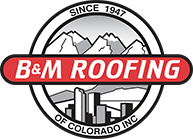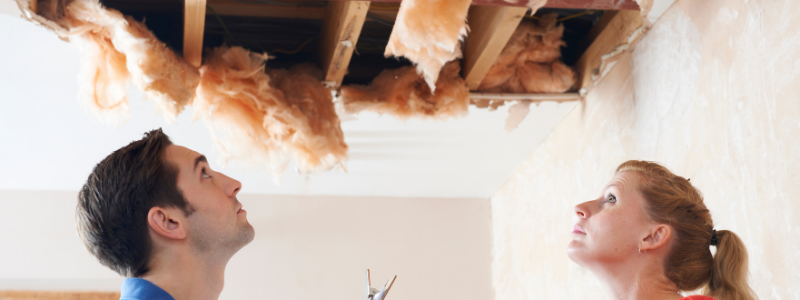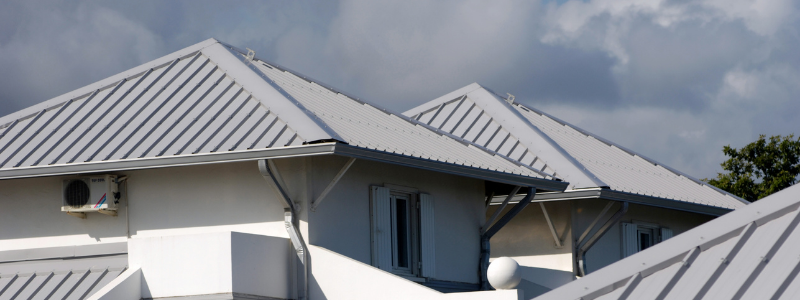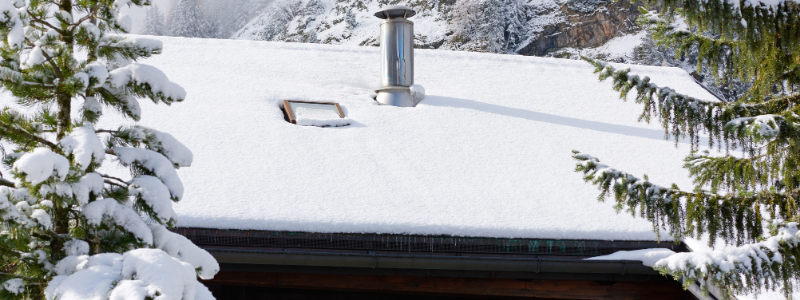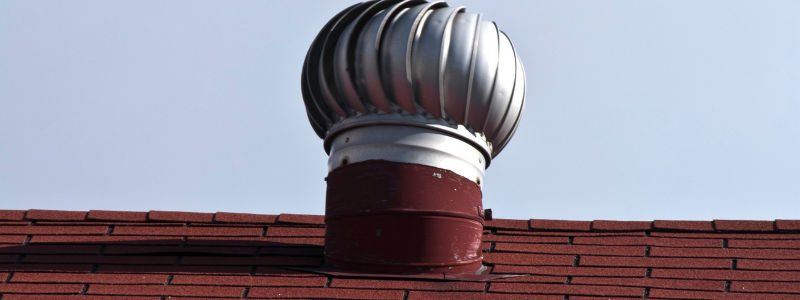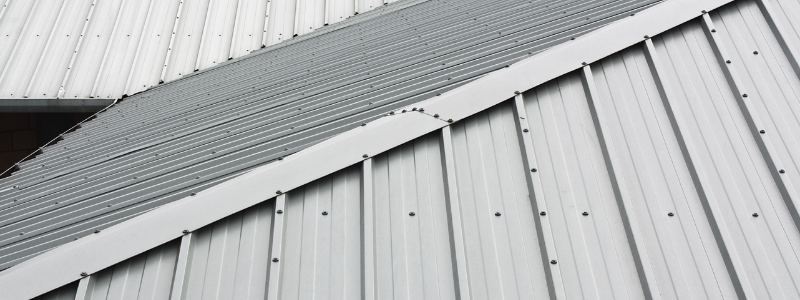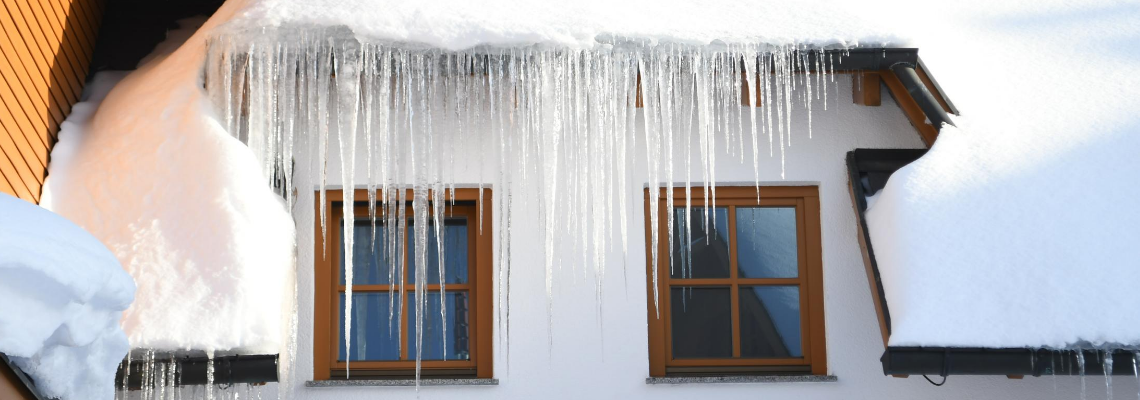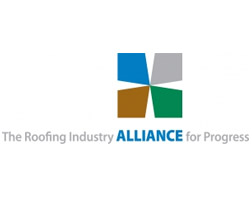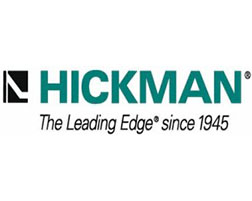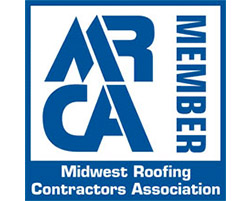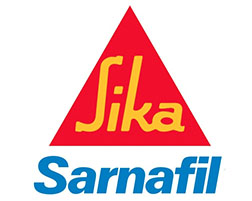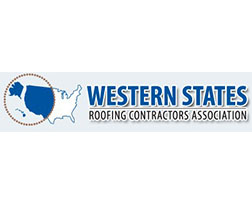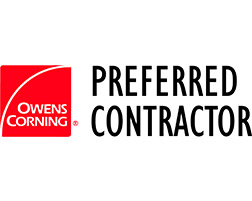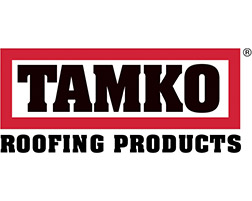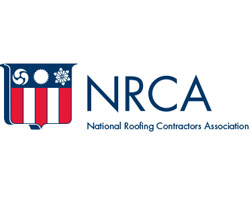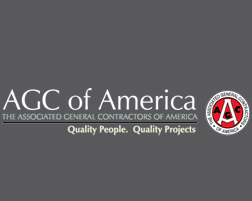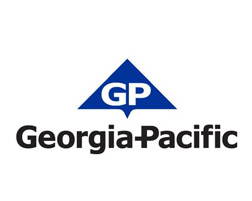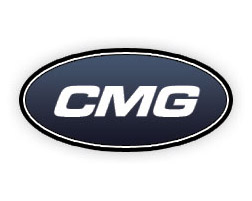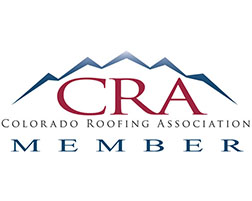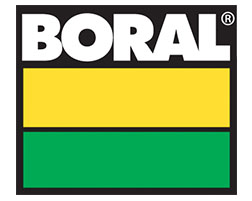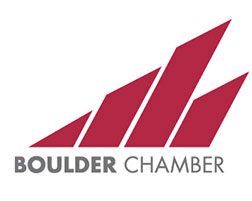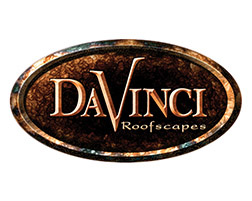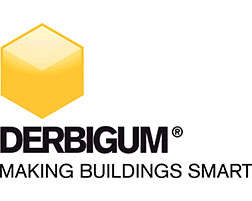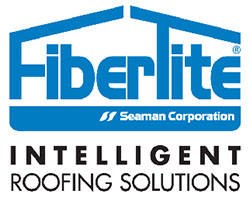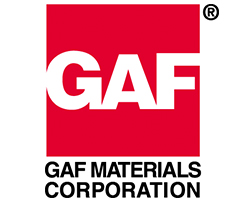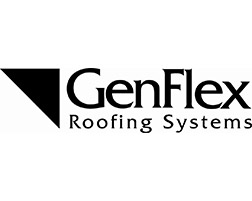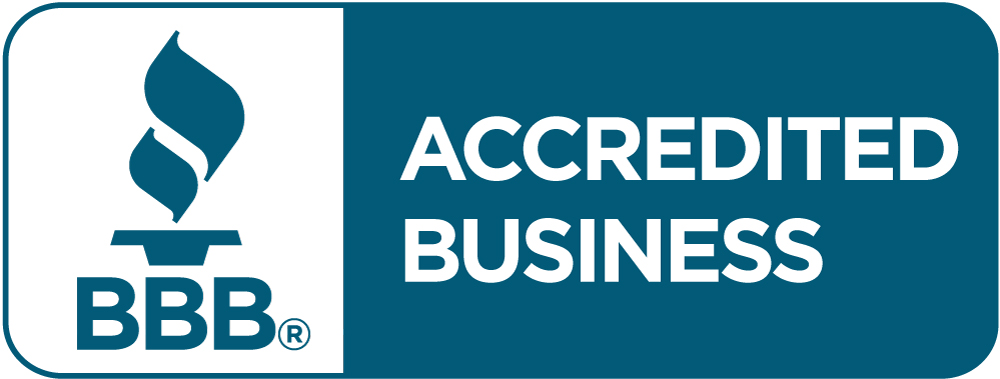Interior Signs of Roof Damage
In spite of homeowners’ best intentions, roof damage occurs. Risk factors include Colorado’s cold winter temperatures, snow, heavy rainfall, and heat. Besides the weather, roof damage can occur because of poor roofing materials, inferior installation. Lack of regular inspection and upkeep can accelerate roof damage. The best way for homeowners to assess roof damage is by inspecting the roof itself. However, there are many interior signs of roof damage. These may prove more costly than the price of roof repair or replacement. Roof damage is not always easy to spot. If your roof style doesn’t allow you to get up there safely and easily, then you may miss signs that your roof needs immediate repair. Most homeowners don’t own the necessary equipment and safety harness to do an annual roof inspection themselves. That’s why it is important to have a roof inspection specialist assess the condition of your roof at least once a year. From inside your home, you can look for interior signs of roof damage.
How to Check for Interior Signs of Roof Damage
Ask yourself these key questions:
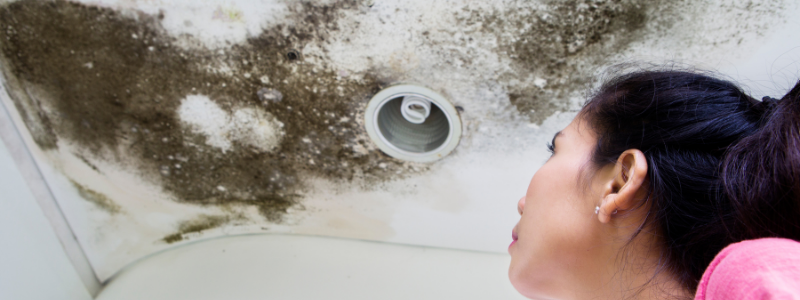
Is there Mold Growing in Your Home?
When moisture accumulates in your home, there is a greater risk of mold spores growing.
Mold is nothing to take lightly. Over a hundred thousand species of mold can grow in your house if the water is allowed to accumulate.
How can you spot mold growth? Be on the lookout for musty spells. Look for mold growth on surfaces.
Sabrina Felson warns of the dangers of exposure to mold. Early signs that you may have mold exposure include things like headaches, sneezing, itchy skin, rashes, or irritated eyes.
If mold is not eliminated, you could develop more serious health conditions like respiratory difficulties, ear infections, nausea, blurred vision, chronic fatigue, neurological disorders, or heart palpitations.
Among the methods of preventing mold from growing, the Centers for Disease Control and Prevention advocates keeping your roof in good repair and making sure there are no leaks around windows and pipes.
Is Paint Peeling on the Walls or Ceiling?
If the paint on your walls and/or ceiling has begun to blister or peel, it may be a sign of roof damage. When you notice peeling or blistered paint, the first step is to repair or replace the roof.
The next step is to fix the damaged areas. First, scrape off the peeling paint with a putty knife and sanded. Clean off the accumulated dust. Apply a thin layer of patching compound with a putty knife. Allow the treated area to dry. Do this twice before priming the area with an oil-based primer. When the primer is dry, paint the repaired area with flat acrylic paint.
Are Puddles of Water Accumulating on the Floor?
If your roof leaks, you may begin to notice water puddles when it rains. Although buckets to catch those drips provide a temporary fix, you need to repair or replace that roof soon. Otherwise, those puddles will ruin the flooring.
Water puddles present a risk to the health and safety of home residents. Slip and fall injuries are more likely on wet floors.
There are more dangers of standing water in your home. Even if the water is clean, it can be a breeding ground for mold. Parasites, bacteria, and mold spores can develop in as little as two days as noted by a Flood Services study.
Can You See Light Coming through the Attic?
While you can’t always perform a visual study of the exterior of your roof, you can check out the attic.
If you can see light in a darkened attic during a sunny day, there are holes or cracks in the roof. These open spaces will let in rainwater.
In no time, mold and deterioration of insulation will occur. This accumulating moisture will also break down roof materials.
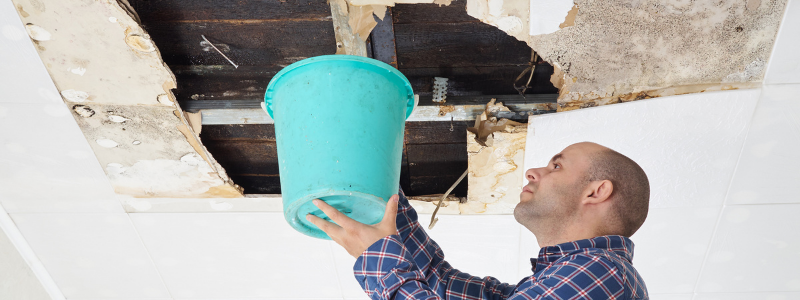
Are Moisture Levels on the Rise?
When a roof is damaged, there are gaps or cracks between the roofing materials. The result is an accumulation of moisture or an increase in humidity.
Rain can seep into your home not just through damage to the roof. Rainwater can also enter through the foundation because gutters don’t work properly to direct water away from the foundation.
When you have your roof inspected annually, make sure the roofing inspection includes gutter cleaning and repair.
If moisture droplets accumulate on floors, ceilings, and wall surfaces and run down into walls, windows, and structural components, they will create an optimum environment for bacteria, mold, and mildew. This can create rot and peeling paint. Furniture, drapes, and other household items will get damp and musty.
Is there Structural Damage to the Interior of the Roof?
Water that gets into your home from a leaky roof can create severe structural damage.
It is important to inspect exterior trim, wall framing, ceiling joists, rafters, and fascia boards for any signs of damage.
If water gets in repeatedly, the wooden components of your house will start to rot. This weakens them over time. The result may be roof failure.
Repairing the structural damage should be a part of roof repair or replacement. If the roof is not fixed, the root cause of structural damage to the interior of the roof will continue. You will soon be repairing that structural damage all over again.
Have Your Energy Bills Increased?
Roof damage isn’t the only reason for an increase in energy bills. Perhaps rates have gone up. Maybe your household has increased and appliances are being used more.
However, when energy bills increase without a logical explanation, chances are roof damage is the cause.
Roof damage can go undetected for a long time if your roof is not inspected regularly. If this is the case, your energy bills will continue to mount.
When the insulation under the roof is damaged or eroded, your heating/cooling system must work overtime to maintain comfortable temperatures in your home. This will increase your household’s energy consumption.
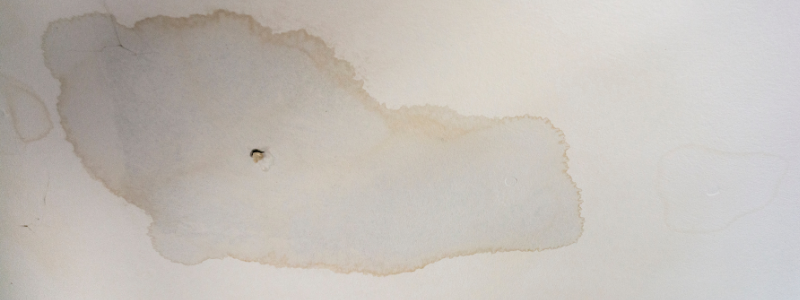
Has Your Ceiling Developed Unsightly Stains?
If water gets in through a damaged roof, it is likely to stain ceilings and other areas of your home. Water blemishes may be brown, grey, or even yellow. If you notice stains, it’s time to have your roof checked.
A roof inspection specialist will be able to pinpoint the problem and repair or replace the damaged roof.
How Can B&M Roofing Help?
B&M Roofing specializes in repairs and roofing of residential and commercial structures. Our technicians can ably handle such projects as roofing, remodeling, as well as cleaning and repairing eaves and gutters.
B&M Roofing has been a trusted roofing repair and replacement business in Colorado since 1947. Our knowledgeable, skilled roofing technicians can assess needed repairs. They are capable of using all roofing materials on any type of roof.
If you own a Colorado home, B&M Roofing is ready and eager to meet your roofing repairs and replacement needs.
For a free assessment of your roof, contact us at https://bmroofing.com/ or give us a call at (303) 443-5843.
House Roof Types
The roof of your home doesn’t just protect the contents and residents. The shape of the roof plays a significant part in the overall appearance and architectural style of your home.
Some house roof types can even provide additional living space or storage space.
A well-designed and properly maintained roof makes your home more resilient to Colorado’s sometimes-severe weather conditions. The roof can provide increased energy efficiency and weatherproofing. This can also cut home heating and cooling costs.
So what are the most common house roof types in Colorado?
Most Common Colorado House Roof Types
In Colorado, the choice of roof shapes is somewhat dependent on weather. The architectural design that is your personal choice may have to be weighed against what is practical in a state that gets extremes of wind, snow, cold, and heat.
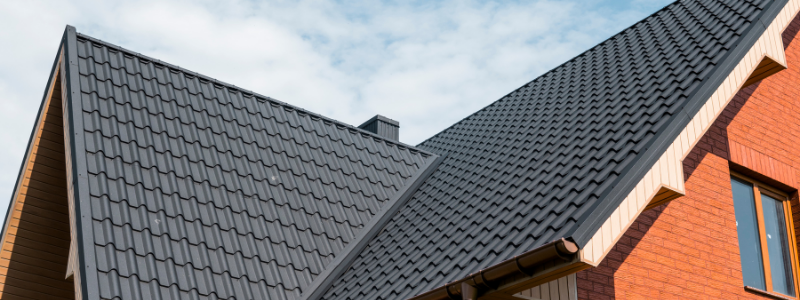
Gable Roof
Gable roofs are often referred to as “inverted V” shapes. Gable roofs slope on two sides: front to back or side to side. There are variations like box gables, open gables, Dutch gables, and gable roofs with dormer windows.
Gable roofs are simple but effective. It is important to get a gable roof pitched just right for Colorado weather conditions.
In Colorado, care must be taken to keep the angle of the slope high enough to allow rain and melting snow to drain off the roof effectively. If the pitch is too low, water lying on the roof may cause damage to the shingles and the underlying structure. However, if the pitch is too high, high winds may damage the shingles and even tear off the roof.
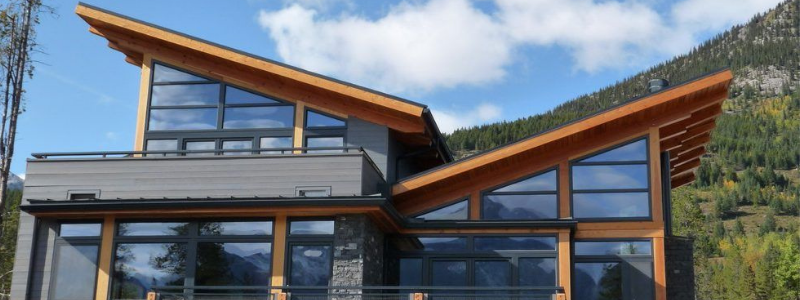
Butterfly Roof
This roof shape has often been called a “reverse gable”. The butterfly design slopes from the outside into the center. This roof type is common with modern, contemporary-looking houses.
Because the pitch is not high, the roof shape offers less wind resistance. However, sloping toward the center causes snow, ice, and rain to collect on the surface.
The fact that this type of roof slopes toward the center makes drainage even more problematic than with a flat roof.
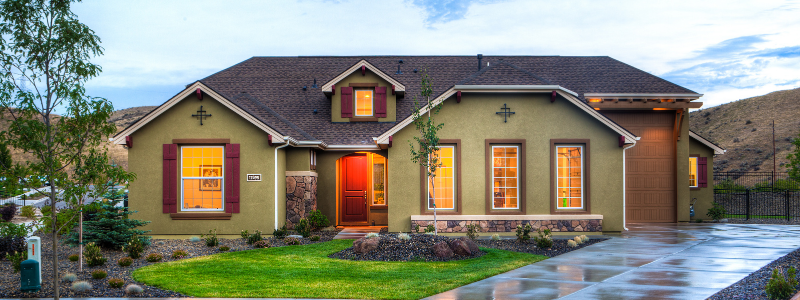
Hip Roof
Hip roofs are popular in Colorado. The sides come together at the top to form a simple ridge. A hip roof has slopes at all four sides of the house.
Pitch is also important with a hip roof. Like gable roofs, the slope on hip roofs must be just the right balance to drain rain and snow but so high that wind resistance is a problem.
Hip roofs are more stable than roof types like gambrel and gable. The inward slope of all four sides makes hip roofs both sturdy and durable.
Given Colorado’s climate, hip roofs are a good choice because they withstand both high wind and heavy snows. The pitch allows snow to easily slide off and avoids standing water.
Dormers or crow’s nests in hip roofs provide extra living space.
The downside is that hip roofs are expensive when compared to gable or A-frame roofs. Their more complex design means more materials and labor so higher costs.
When additional dormers or crow’s nests are added water may collect in seams and cause leaks.
Variations of the hip roof include hip-and-valley roofs, intersecting hip roofs, cross-hip roofs, and pyramid-hip roof shapes.
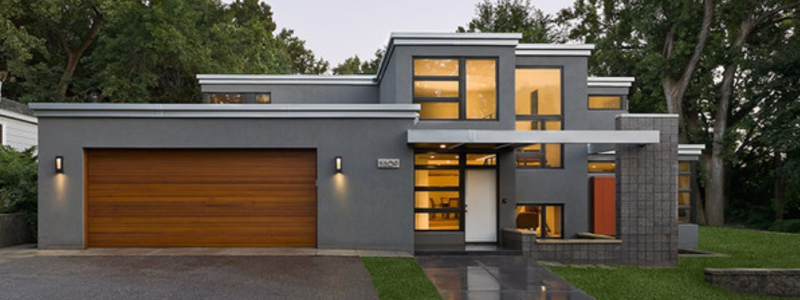
Flat Roof
Flat roofs and butterfly types of roofs are more common in business structures than in house architecture. However, these roof types are becoming more popular in housing developments.
The advantage of a well-designed flat or butterfly roof is that the shape can offer added outdoor living space. You can add a rooftop garden, patio, or partially enclose a penthouse room. HVAC systems can also be placed on a flat roof out of sight. This roof shape works well for wind resistance.
Flat roofs are cheaper and faster to build because they require few materials and less labor.
One disadvantage is that flat roofs present problems with drainage. Snow, ice, and rain collect on the flat surface. For this reason, flat roofs are not recommended for Colorado climates where there is a lot of snow and rain. Low to no slow also causes problems with weight buildup and often results in leakage into the home as it does with butterfly-shaped roofs.
Flat roofs cost less to build but they can be expensive to maintain and repair.
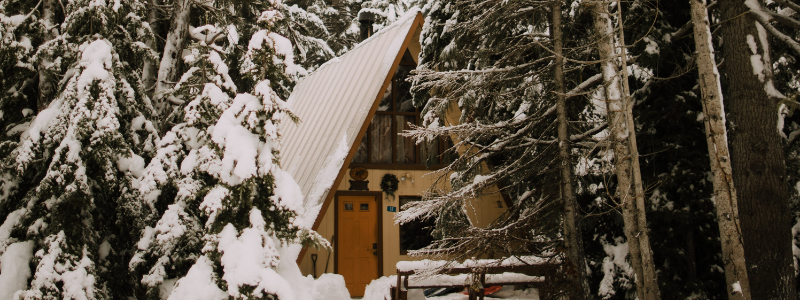
A-Frame Roof
An A-frame roof is easy to identify. It is a steep, pointed, inverted V. The roof goes all the way to the ground, taking up much or all of the house walls. You’ll see this type of house roof in wooded areas, where a lot of snowfall is expected.
A-frame roofs are simple and cheap to build. The A-frame roof doubles as all or part of the home’s sidewalls.
Besides being inexpensive to build, A-frame roofs are pitched so steeply that water and snow do not accumulate.
There are disadvantages, however. A-frame roofs can make the interior of the home dark. The inside walls are sloped. This limits potential space on the second floor. Not every design lends itself to an A-frame type of roof.
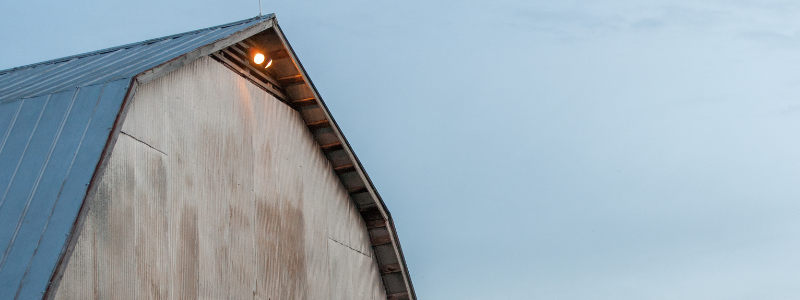
Gambrel Roof
A Gambrel roof is often referred to as a barn roof. It has two different slopes. Unlike the mansard roof style with four sides, the gambrel has two sides.
The lower side of the gambrel roof has a steep, almost vertical slope. The gambrel roof style is popular in farmhouses, log cabins, sheds, workshops, and storage buildings.
Advantages of the gambrel style include extra living space. Homes with gambrel roofs often have garrets, attics, or lofts. Gambrel roofs tend to be less expensive than some roof styles because they are quicker and easier to frame. The style uses only two roof beams. Thus, less material is required.
However, there are some disadvantages. The steep pitch makes a gambrel roof not a wise choice for areas where there are high winds and/or heavy snowfall. The roof style is likely to collapse under heavy pressure. If gambrel roofs are not well constructed the ridges can leak. Gambrel roof ridges must be repaired frequently to keep them watertight. Yearly inspections and repair avoid storm damage.
There are several variations of the gambrel-style roof including gazebo-type roofs and mansard roofs. Some gambrel variations are referred to as French-style roofs, “jerkinhead” roofs, and “saltbox” roofs.
Single properties may include several roof types.
Why Choose a Roofing Specialist?
No matter which roof type you choose for your home, the roof requires annual inspection and repair.
Roofing specialists like B&M Roofing have the expertise and experience to deal with the unique needs of every roof style. Regardless of the roof style, it is important to have your home’s roof checked yearly by knowledgeable roof repair specialists.
When your home has been damaged by Colorado’s challenging weather conditions, it is crucial to choose a Colorado roofing company that can restore your roof, the gutters, downspouts, windows, doors, and siding to their original condition.
To discuss which house roof types are best for you and your family, reliable roof repair or replacement, or to request a free estimate for your home, contact us.
How Long Does a Roof Last in Colorado
Colorado weather poses a challenge for roofs. As one forecaster noted, within a single day, areas of Colorado can see rain, snow, high winds, hail, downpours, and beating sun. So, how long does a roof last in Colorado?
There are several factors to consider. Weather is a major consideration.
Colorado has cold and snow during the winter season. This is a challenge for the longevity of your home’s roof. Heavy snow and the build-up of ice pose a challenge for roofs in Colorado. During spring and fall, Colorado often receives heavy rainfall. During these seasons, leaks are not uncommon. In high-wind areas of Colorado, roof materials may be blown off. This can also cause leaks. Colorado has two hundred and fifty or more days of sunshine.
While sunshine is very appealing to people relocating to the state, it is not so healthy for your roof. With Colorado’s high altitude comes the intense sun. This can cause roof materials to crack, blister, melt, and fade. Winds are also a factor. Two things cause Colorado winds. In the winter, the difference between strong low pressure and cold, high-pressure systems produces wind. Chinook winds also develop across mountain ranges. While Colorado winds are good for wind power generation, they can be hard on roofs. Usually, winds between seventy and ninety miles per hour cause roof damage. Even gusts of only fifty miles per hour may also cause damage that requires roof repair.
The lifespan of Colorado roofs is shortened by weather conditions like sub-zero temperatures, blistering heat, hail, heavy snows, torrential rains, and high winds.
Roof Slope Challenges
Flat roofs are stylish, modern, and efficient. However, in Colorado’s snow and cold, they are not necessarily a wise choice. Low-sloped roofs have a reputation for cracking, collapsing under the weight of snow, and leaking in excessive rains.
Higher pitched roofs allow gravity to work in their favor. Snow, rain, and melting ice slide off whereas with lower sloped roofs you need an effective drainage system and a strong building structure to prevent roof damage and leaks.
Range of Roof Life in Colorado
Many things factor into your roof’s lifespan. At B&M Roofing, we estimate a Colorado roof will last between fifteen and thirty years. Manufacturer’s warranties may be anywhere from thirty to fifty years. However, these estimates depend on things like temperature extremes, weather conditions, and maintenance.
The type of roofing material is also a factor. Asphalt shingles, for example, do better in colder climates than in tropical heat.
Clay or concrete tile roofing is very durable and resilient. However, because they are so heavy, they must be installed on very sturdy roof structures. Clay or concrete roofs will last fifty to a hundred years.
The most durable roofing material is slate. It is expected to last a century or more.
Wood shingles have a lifespan of between twenty-five and thirty years if they are properly maintained. However, the roof must be kept free of moss and twigs so moisture is not trapped on the shingles. Fire is also a danger with this type of roof.
Cedar shakes are thicker than shingles. This means they are a good choice for Colorado’s intense heat and harsh cold winter weather. Wood shakes must be maintained to give them a lifespan of thirty-five to forty years.
Metal roofing is very resilient. Most metal roofing is steel or aluminum with a lifespan of fifty years. Copper or zinc roofing will last a century or more.
Why Get a Roof Inspection?
A new roof can prove pretty costly. With regular roof inspections, you can expect your roof to last longer. So, savings are significant.
Roof inspectors look for wear and tear on your roof. They can accurately estimate the life of your roof. They will make recommendations regarding necessary repairs. Certified roof inspectors can identify unsafe areas and roofing that is in poor condition. Roof inspectors will look at both internal and external components of your roof.
Roof Maintenance
Roof maintenance should occur twice a year. Whether it is done by the homeowner or a certified roof maintenance company, roof maintenance will pinpoint small concerns before they become costly to repair or replacement problems.
Some roof maintenance strategies are simple. Others may require a certified roof maintenance service.
- In the spring and fall, do a check from the ground. Look up. Do you see any lifted, curled, or missing shingles? Are there damaged drip edges? Are flashings buckled or missing? Are fasteners damaged or missing? Are any gutters sagging or broken? Do you see piles of granules?
- Cleaning gutters is a job better done by roof maintenance experts. If it isn’t done two or more times a year, water can back up. This can rot fascia.
- Make sure to trim trees. Leave no branches hanging over or touching your roof. Branches can fall in the wind and damage the roof.
- When you do your inspection, look for evidence of moss or algae. Remove roof debris and overhanging branches to keep moss and algae off the roof. Make sure the attic is properly ventilated.
- Check the caulking on the flashings. If it is cracked or pieces are missing, it needs to be re-caulked. Call an expert.
- Do an insulation check in your attic. Good insulation and ventilation in your attic will extend the life of your roof. Insulation prevents the formation of ice dams and reduces moisture on your roof.
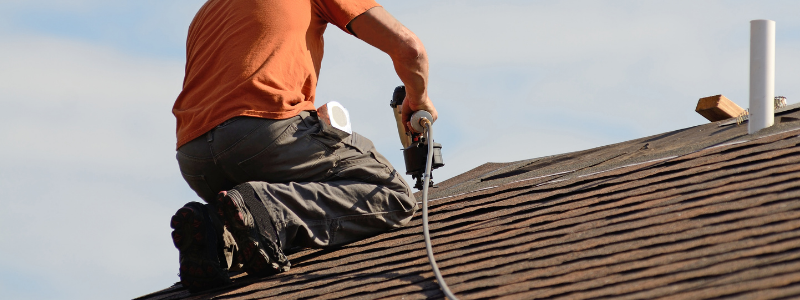
Why Choose B&M Roofing?
When it comes to roof replacement, repair, or maintenance, you want a company that specializes in roofing.
Our Colorado-owned company has recently celebrated seventy years of dedicated service. Our commitment to excellence is evident in every job we do. No roofing project is too big or too small. Each new roof or repair receives our experience and expertise.
Our work extends from commercial projects like the Denver Coliseum and Coors field to residential new constructions and emergency repairs.
B&M Roofing started in Fort Collins in 1947 as a single-truck enterprise. We now provide meticulous service to thousands of customers annually. While we’ve grown bigger, we continue our commitment to total customer satisfaction we vowed to provide seventy years ago.
How Much Does the Average Roof Replacement Cost?
Roof replacements don’t happen too often, but when they do, it’s usually because the older roof is old or compromised. So, it’s not typically top-of-mind when it comes to budgeting home improvement costs. How much does the average roof replacement cost? We’ll break it down for you.
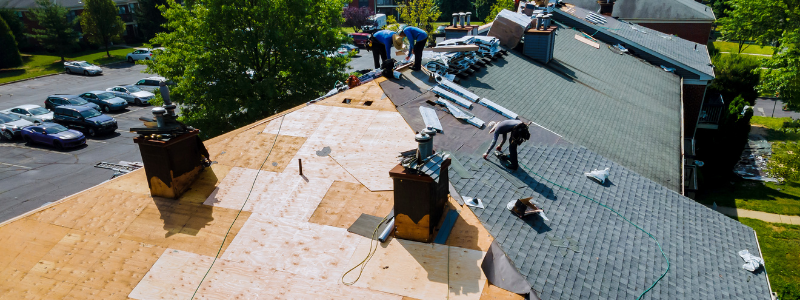
How Much Does the Average Roof Replacement Cost?
Want a quick answer? You’ll want to budget between $4,200 and $6,600 for replacement on a roof that is 1,600 square feet. This estimate assumes materials like asphalt roof shingles. If you use materials like metal, wood shingles, or clay tile, the cost could increase to between $9,500 and $16,000.
If you want a more accurate assessment of your roof, you could use a roofing replacement cost calculator app.
How are Roofing Estimates Determined?
When experienced roofing contractors arrive to provide a free estimate, they consider several factors. This is how they go about giving you an accurate cost analysis.
-
Roof Measurement
Roof measurements are taken digitally. Roofing contractors use technology like satellite imagery or drones. Their calculations include such factors as the slope, roofline peaks, and the overall complexity of your roof.
-
Roof Inspection
In a thorough roof inspection, roofing contractors assess the condition of your roof. This helps them determine the scope of the project.
-
Roofing Materials
Experienced roofing contractors will explain the advantages of various materials and make recommendations concerning the best roofing system materials for your home or business. They will factor in such things as shingles, ventilation, roof accessories, and warranty.
-
Calculating Costs
Once the roofing contractor has obtained this information, the company is prepared to provide an accurate estimate to the question: How Much Does the Average Roof Replacement Cost?
The roof replacement specialists will factor in: labor, materials, warranty, and permits, the cost of removing old materials, and cleaning up.
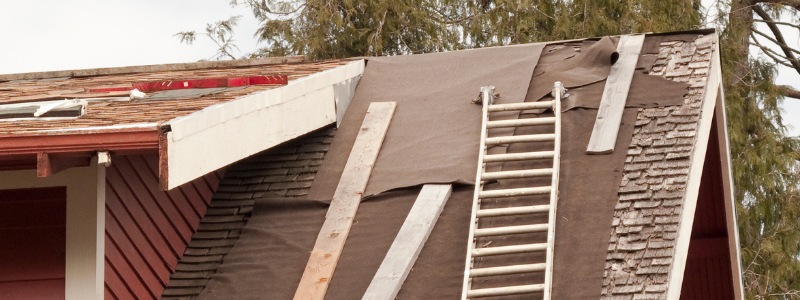
Key Factors in Roof Replacement Quote
Many variables factor into the answer to the question: How Much Does the Average Roof Replacement Cost?
Roof Size
Roofing specialists calculate the cost of roof replacement on a square footage basis. The roof area is one of the most significant factors when considering: How Much Does the Average Roof Replacement Cost?
A U.S. Census figure notes that the average house roof in the United States is approximately 1,700 square feet.
Roofing Materials
The second most important factor to consider in the cost of roof replacement is the materials. Asphalt shingles are both popular and economical. Metal roofs, wood, slate, clay, or solar tiles cost more. However, these materials often have other benefits. They may provide better curb appeal, extra insulation, or solar power for your home.
Roofing materials range in price from $100 per square foot to $1,000 per square foot. Experienced roofing contractors will help you decide on the best roofing materials for your budget.
Roof Complexity
Steeper roofs require more staging and safety precautions. They usually take longer to install. Thus, labor costs will be higher.
The pitch is not the only consideration. Roofing contractors also factor in chimneys, skylights, and ventilation pipes. It takes extra time to work around these complexities.
The complexity of the roof design must also include various changes in the roofline. These can result in both extra labor and materials.
Location
The cost of roof replacement depends on where you live. Fluctuations in cost may reflect the cost of living differences in regions. Material and labor costs vary based on climate and other factors.
For example, the average roof replacement cost in Denver is slightly above average. A survey of roofing contractors in various parts of America revealed that prices range from $4,500 to $10,000 to replace a roof.
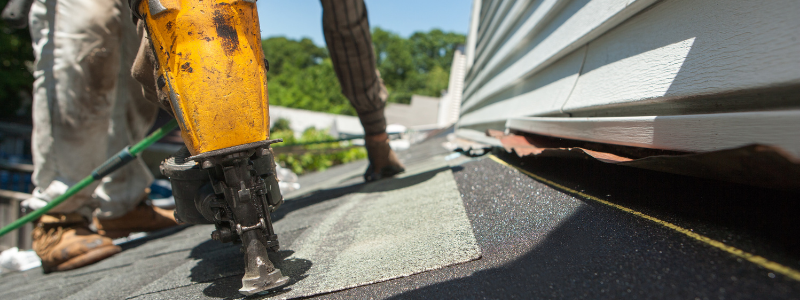
Why Replace Your Roof?
A new roof is a big expenditure. However, there are many reasons it makes sense to replace it.
Roofs in good repair withstand weather to protect your building. Their average lifespan is twenty years. By replacing your roof, you guard against things like loose shingles and moisture leaking into your home, mold, and mildew that can affect the health of your home and its residents.
Failing to replace a roof can have several negative impacts:
- Water leaks occur when your roof loses its protective barriers. If worn, cracked, missing shingles are not replaced, the problem may escalate, causing structural damage to your home.
- Roof leaks can affect walls causing them to deteriorate and collapse. Roofs that are not replaced weaken and fail to support the weight of water, ice, or snow. Ceilings and walls may collapse. The result is major structural repairs to your home.
- Old leaking roofs breed molds and mildew. Breathing these dangerous spores can lead to headaches and chronic breathing difficulties.
- Damaged roofs are also invitations to vermin, pests, and animals. These visitors can chew insulation and wiring. Rodent infestation can also cause disease and house destruction.
A well-maintained roof also helps the heating/cooling system work effectively. This can result in a huge reduction in energy costs. An unattended roof repair will increase electricity bills. Holes that cause leaks let out cold air during the summer heat and let in cold air during the winter.
Roofing Replacement Return on Investment
The exterior of your house is the first thing prospective buyers see. A new roof can increase home value by as much as 30%.
While a new roof can be expensive, it might be a good investment when you consider the negative impact your current roof could have on your sale. Your new roof will result in faster offers, more offers, and higher offers when you sell your home.
Why Choose B&M Roofing?
Roofing replacement projects can be quite a financial undertaking. That’s why it is important to hire a roofing specialist with proven experience. The experts at B&M Roofing of Colorado are equipped to help you with any project you throw at them! To get a free estimate on your project, contact us by filling out this form, or by calling 303.443.5843.
Colorado Roofing Codes
Just about every state, within the United States, has its own roofing codes. Colorado is no exception. A roofing code is very important, as it ensures that every roof built within a particular state possesses a series of very specific features that ensure the safety and welfare of those living and working in and around a particular building. Colorado roofing codes must be followed to ensure the safety and security of both a particular roof and the building that the roof is protecting.
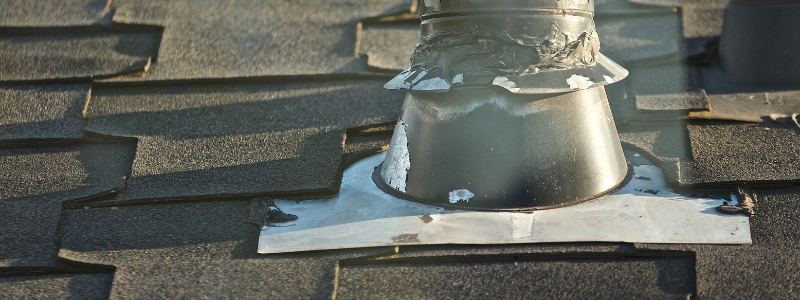
Roofing Permits
A roofing permit is a permit that allows for roof repairs and construction to take place. More often than not, to begin any particular roof-related task, acquiring a roofing permit is absolutely necessary.
By possessing a roofing permit, you can accomplish a number of roof-related tasks, such as repairing the entirety of your roof and installing a roof penetration. But, for certain, more specific tasks, a specialized permit may be necessary, depending on the scope of the work being conducted.
Even though a roof permit is almost always necessary, there are several cases in which you do not need a roof permit.
- Every building that is under 25,000 square-feet can have 10% of its total roof size repaired without a permit.
- A similar rule applies to buildings that are more than 25,000 square feet, but only 5% of the total roof size can be repaired.
- To go along with that, roof coatings, no matter the size of the roof, can be applied without a permit.
Asbestos
Roofs that contain asbestos, no matter the amount, must be inspected before being repaired or torn down. Every roof inspection related to asbestos must be conducted by an inspector that has been certified in Colorado. Because of this, even if you possess a certification that lets you perform asbestos inspections in another state, you are unable to do so legally until you receive a certification that is specific to Colorado.
Right before repairs, or tear down efforts can begin, the exact quantity of traceable asbestos must be noted. Depending on the quantity of asbestos within the roof, a General Abatement Contractor, who has been certified in Colorado, may need to be hired to tear down the roof and dispose of the asbestos that was found.
Attic Venting
Every new attic venting construction must be inspected. This inspection is necessary to ensure that the venting fulfills all roofing codes, while also being able to expel air from within the building in a manner that is safe. For re-roofing projects, however, as long as the current attic venting fulfills all roofing code requirements, an inspection is unnecessary.
Some attics lack venting features. For those attics, there must be air-impermeable insulation. The purpose of this insulation is to prevent cold moisture from accumulating on the roofing material that lies just above the attic. Due to Colorado’s frequent snow, rain, and cold weather, air-impermeable insulation is, for attics that lack ventilation, extremely important.
Roof Decking
Most of Colorado – and, in turn, most of the United States – allows roofs to possess only two layers of roofing. The main reason for this is that two layers of roofing can lead to strain on a roof, while also making repairs far more difficult. Both of these problems can easily lead to issues with stability and safety, which is why this particular roofing code exists.
For a new roof that is being constructed, only two roofing layers are allowed to be built. Every roof construction project must take this roofing code into consideration. For roofs that have already been constructed, though, roofs that possess more than two layers of roofing must be removed down to the decking. This, in turn, often means that the decking will need to be replaced, as well as the roof itself.
Roof boards that are over half-an-inch must not have any continuous openings between them. These openings, if they exist, must be filled up. Due to Colorado’s frequent bouts of intense rain and snow, these voids serve as massive vulnerabilities, since rain and snow can easily coalesce within those voids and damage the foundation of a roof or, depending on whether or not they flow through the roof, the entire building.
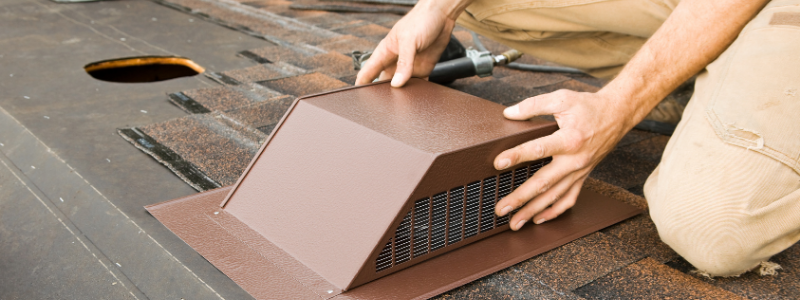
Roof Equipment
A roof repair – or the construction of a new roof, for that matter – will often require some intensive equipment. To ensure the safety of those working on the roof, there are several roofing codes that must be followed at all times.
Every piece of mechanical equipment must be installed on either curb bearings or leg bearings that are no more and no less than eight inches. Regardless of how the equipment is installed, it must be secured to the decking, to ensure that it remains stable and balanced. Placing this equipment on slip sheets or resonator pads is not allowed.
The decking that this equipment must be secured to must be watertight. More importantly, though, it must also be flashed to the roofing. Without these two elements, the equipment may be unstable, which can lead to serious safety risks.
Colorado roofing codes are vast and elaborate. But, despite all of this, they are exceptionally important and must be followed, to ensure your safety and the safety of others. Due to the complexity of these roofing codes, along with the necessity of following them properly, hiring a professional is often the right choice for roof repairs and roof construction.
Colorado roofing codes described in previous sections are only several of the many roofing codes that you must follow. All of these roofing codes are complex, but they are completely necessary for ensuring the safety and security of your roof.
Here at B&M Roofing, we are familiar with Colorado roofing codes, as well as the ways in which those roofing codes must be fulfilled. You can contact us today, and we will work with you on repairing/constructing a roof that not only meets all of your requirements but those of Colorado’s, as well.
How to Choose a Roof for your Home
When it’s time to get a new roof, many homeowners wonder which roofing type is ideal for their home. Many consumers explore many roofing types rather than merely replacing their existing roofing systems. While many considerations weigh into the decision, including covenants and personal esthetic preferences, each type of roofing has its own advantages. Don’t know how to choose a roof for your home? Here are some ideas…
Types of Roofing Materials
If you’re wondering how to choose a roof for your home, we’ve included a list of different types of roofs to consider:
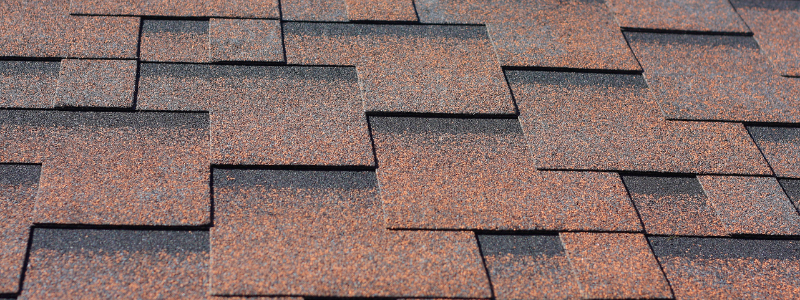
Asphalt Roofing
By far the most popular choice for roofing material, asphalt shingles are available in many colors to suit many homeowners’ tastes. We’ve installed our fair share of asphalt shingles and there are a couple of reasons for this:
- They are the most common, with over 75% of American roofs having them.
- They are the least expensive, costing homeowners about $50-$100 per square.
- They are one of the easiest to install, on just about any architectural style.
- They are one of the most affordable of all roofing materials and since they’re easily replaceable, this type of roofing style can cut down your repair costs.
- Asphalt shingles can usually last more than 30 years, depending on the weight of the shingle. These shingles are very fire resistant, as well.
- They can come in a variety of styles, making it easy to select shingles that will complement the style of your home.
However, you might want to consider the downsides to having asphalt shingles as well:
- They have a low R-value (insulation value): Being a thin material, their resistance to heat (and cool) flow is very low.
- They have a shorter lifespan: Compared to other roofing shingles, asphalt shingles don’t last long, lasting from only 15 to 30 years.
- They are not eco-friendly: They have the least-green roofing option to have on your roof and are not recyclable.
Metal Roofing
A more durable solution than traditional shingles, metal roofing systems also offer more leeway for architects’ designs to flourish, making it a favorite among high-end builders, though are typically much more expensive than other options. Lightweight and virtually fireproof, metal roofs withstand extreme weather well.
Homeowners can reasonably expect to get 50-60 years of service life from a metal roof, though that means you may be investing in a roofing system that will be around a lot longer than you’re in the house.
Metal roofs have a very high life expectancy. They’re weather-resistant, and offer especially good protection from high winds and snow. They are also fire-resistant, earning a Class A fire rating, which means it’s the most resistant.
While metal may seem like an odd roof choice, its range of styles and colors make it an excellent option for giving a modern update to older houses and buildings.
They are also remarkably low maintenance and generally come with a 20- to 40-year warranty. Even though the initial costs of a metal roof will be more than traditional materials, the minimal maintenance and low replacement costs will help save money in the long run.
Wood Shakes/Shingles
Many homeowners prefer the more natural look of cedar shakes and shingles for their roof. While more expensive than traditional asphalt shingles, you can expect them to last 30-40 years if maintained well. Cedar shakes and shingles are more resistant to extreme weather and more energy-efficient than asphalt options but are also more costly.
Wood shingles are small, light, and severed on both sides. Wood shakes are generally thicker and are hand-split. The most common wood shingles are cedar, which are longer-lasting and more fire-resistant. Fire-retardant coatings are typical with wood shingles. Take into consideration wood shingles require a steeper roof to get rid of moisture.
Wood shingles are beneficial for the following reasons:
- Natural Beauty – The character of wood shingles blends nicely with the landscape and other surroundings. Its natural color and look enhance your home’s overall curb appeal and over time, the cedar will change to a more old-fashioned, silver color.
- Lightweight – Second to asphalt shingles, wood (cedar) shingles are one of the most lightweight roofing materials, making them easier to repair.
- Insulation – Cedarwood is a natural thermal insulator, keeping your house cool during the summer and lowering the heating bill in the winter.
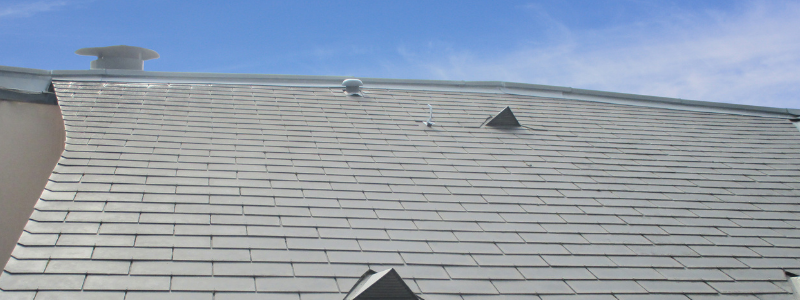 Tile and Slate
Tile and Slate
Homeowners who demand high style often choose tile or slate roofing systems. Concrete or clay tiles are available in numerous styles, from classic Tuscan tiling to fire-resistant concrete replicas of shake roofing.
While many tile and slate roofing systems are engineered to last up to 50 years and are highly resistant to Colorado weather, the roofing underlayment may need to be replaced every 20 years, requiring maintenance many homeowners don’t foresee. Also, because of the weight of these roofing systems, many homes must be structurally reinforced to accommodate them.
Clay Tiles
Clay tiles are all-natural and are fired in a kiln. They are generally one of the most expensive and heaviest of roofing materials. Clay tiles will last a long time, however, as they are environmentally friendly and are resistant to both freezing and hot temperatures, as well as the sun’s harmful UV rays.
However, they are more vulnerable to cracking in Colorado’s extremely low temperatures. There are some benefits, though, like:
- Insulation – Since hot and cold temperatures don’t affect clay tiles as much as other roofing materials, clay is a natural insulator, keeping the energy bill low.
- Low-maintenance – Clay tiles don’t absorb water, mold, or mildew very well, making them basically maintenance-free.
- Color – Clay tiles don’t lose their color much since they are a natural roofing material.
Slate Tiles
Slate tiles are natural, shingle-like, flat sheets of rock. Slate tiles can also be very pricey and heavy for your roof, but the stone look provides plenty of curb appeal to your home. Because of their weight, slate tiles do require extra roof support and framing.
This roofing material requires professional installation, as walking on these tiles can be difficult and result in breaking the stone slates.
In Colorado, these are the most common roofing options we’ve seen in our experience. We can also assist you in how to choose a roof for your home and what it consists of.
If you’re still wondering how to choose a roof for your home, our roofing experts can talk with you about your ideas, your budget, and your needs.
Winter Roof Problems
Snow can really add a sense of beauty and marvel to any home or commercial property. Winter has a sense of calm, comfort, and relaxation to it – however, when things start to get cold and wet, those feelings quickly disappear. To enjoy winter, it’s best to be prepared for what it can do to your roof. The secret to enduring the winter is if your roof can do the same. Roof damage is not just a hail storm or spring season-exclusive occurrence.
Winter is probably the most challenging season for your roof, even more so than the storms Colorado sees in the spring and summer.
There are many different winter roof problems your home or business could face and it is important to be prepared and ready for anything that might happen!
Before the first snowstorm comes, it is a good idea to inspect your roof and analyze if there is any existing damage. If you can catch a problem and address it early on, you are more likely to prevent a bigger issue from happening, which could ultimately save you a lot of money. If you have problems like any of the ones below, it’s not too late to have your roof looked at and repaired. After all, that’s the great thing about Colorado is that the sun still shines, giving us extra time to work on roofs.
Here’s what to look for during the winter:
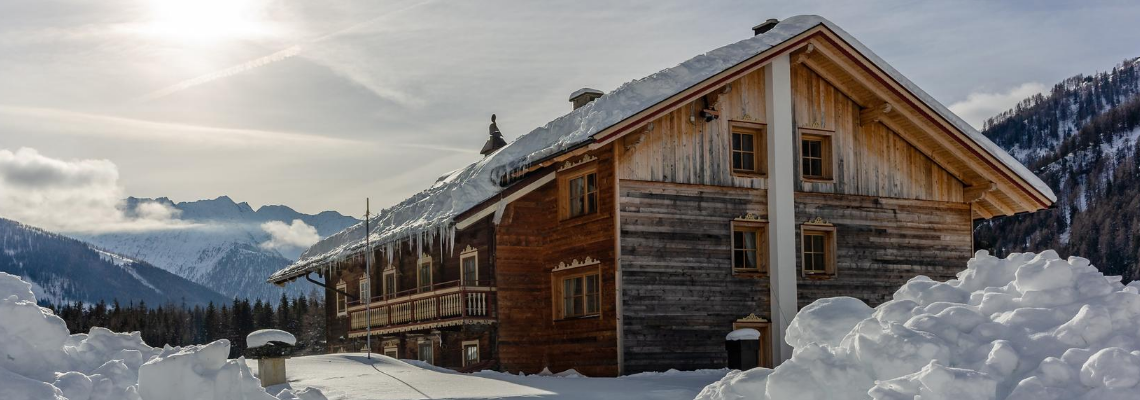
Typical Winter Roof Problems
If your roof appears to be in tip-top condition, you still want to keep an eye out for the following issues to arrive over the course of the winter season:
Ice dams
Icicles may look festive and decorative during the winter months, but they usually spell T-R-O-U-B-L-E for your roof and property. Ice dams are layers of ice that form at the edge of the roof which prevents melting snow from being able to properly drain off of the roof. The excessive buildup of melted snow then has nowhere to go and could end up in a home’s interior causing lots of damage, as well as damage to the roof.
Ice dams usually occur from inadequate ventilation or insulation in a home’s attic. If you discover your roof has ice dams, you will want to call a professional to come out and help you remove them. After the ice dams are removed and the issue is solved, it is important to constantly check your roof for signs of weathering to prevent further damage
Condensation in Attic
A warm attic with a cold roof over it is the perfect place for condensation to occur which can lead to mildew, mold, roof failure, and structural damage to your home. Poor ventilation is usually the main culprit to attic condensation, which is a complex issue that requires professional attention. If you notice that your attic has condensation, you will want to contact a professional who can help remedy the situation and ensure it does not happen again.
Adding things like roof vents and insulation will help prevent condensation from happening. This in turn will help prevent other winter roof problems like ice dams, leaks, freezing gutters, etc. The best time to install these roof accessories is during the early fall before the snow hits.
However, if you’re having problems with your roof during the winter and installing these items is the best option, we’re happy to install them in the winter months, too. Roof vents and insulation can be installed on both residential and commercial properties.
Flashing Leaks
Flashing is a section of sheet metal that protects the joints in a roof in order to prevent water damage. The locations of flashing vary depending on the type of roof, however flashing is most commonly used around a chimney, skylight, or dormer windows where leaking is likely to happen.
If you notice leaking around these areas, it means that the flashing could be damaged or weathered and it is time to call a professional roofing inspector. We recommend having a roofing inspector examine the roof flashing biannually to prevent larger issues from happening.
Flashing is much more affordable to fix when you catch it early on. Once the water has leaked through and caused damage, there are greater and more expensive issues that can arise.
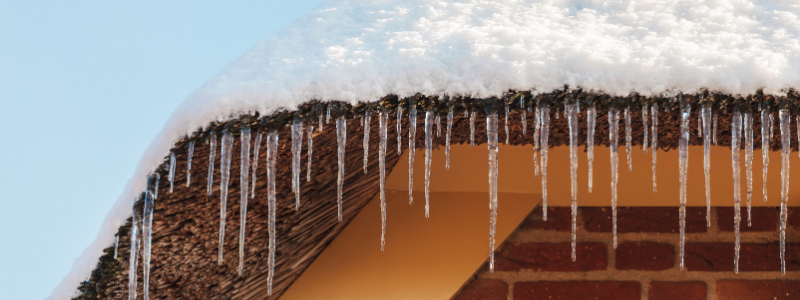
Freezing Gutters
Gutters freezing over is another typical winter roof problem. It usually occurs with ice dams, as they go hand-in-hand, but not always. Sometimes, especially in Colorado where we’ll experience a quick snowstorm and then the sun is right back out and shining the next day, the water from the roof drains from the roof into the gutters. Before the gutters are able to properly drain all of the water, the temperature drops, freezing the remaining water in the gutters.
This is usually because of leaves that are clogging up the drainage or something similar.
The next day when the temperature rises again, the water starts to leak into the windows, walls, and siding, instead of where it is intended to flow. You can prevent this from happening by making sure your gutters are cleared of any debris, but you can also drill a few holes in the gutter to help allow for faster draining. Typically, if you can solve your ice dams problems, you can solve the problem of your freezing gutters, too. Gutter guards are also a great idea to prevent the gutters from clogging up during the fall and winter months.
B&M Winter Roof Repair
Experiencing any of these winter roof problems? It’s not too late to get any repairs or even a roof replacement done – even after the snow has started falling. We have some temporary fixes until we’re able to help out. Don’t forget that we offer free estimates and emergency roof repair!
Stay ahead of the game this season and make sure your roof is ready to take on another Colorado winter.
Commercial Roofing Materials
There are, generally speaking, two types of roofs – residential roofs and commercial roofs.
Residential roofs are, essentially, roofs that are meant to be used for residential structures, such as houses. Commercial roofs are roofs that are meant to be used for commercial structures, such as office buildings and places of business.
Beyond the basic aesthetic differences that separate the two, the most notable difference between residential roofs and commercial roofs is the materials that they use. We break down the most commonly-used commercial roofing materials.
What Are The Most Common Commercial Roofing Materials?
There are some commercial roofing materials that are used a lot more than others. Each one of these materials consists of unique properties, all of which make the roofing material strong and durable. Many of these materials provide the same basic protections, but to a greater or lesser degree, and in a slightly different way.
Tar & Gravel
Many commercial buildings rely on flat commercial roofs. The reason for this is quite simple:
- Flat roofs are less expensive
- Flat roofs are easier to install
- The space on top of the roof can be used for various purposes
Unfortunately, there is one flaw – sloped roofs make it a lot easier for rainwater to trickle off of the roof and onto the ground. With flat roofs that simply isn’t possible, due to the roof’s shape. Because of this, leaks are more common with flat roofs.
To solve this problem, a lot of commercial buildings use tar & gravel for their roofs.
Tar & gravel commercial roofs consist of a top layer that is coated with gravel and a series of asphalt sheets that are bound together by large quantities of tar.
Since tar & gravel roofs are so dense, it is very difficult for water to seep through. Because of this, tar & gravel roofs are often used in places where rain is frequent and intense.
A tar & gravel roof keeps water from flowing through the commercial roof and damaging the commercial building.
Polyvinyl Chloride (PVC)
Polyvinyl Chloride, or “PVC” as it is more commonly known, is a single-ply roofing material that is used on flat roofs.
Many commercial roofs use PVC due to the versatility and flexibility that it offers.
Because of this versatility and flexibility, a PVC roof can be installed on an existing roof membrane, rather than the pre-existing roof needing to be taken off.
Beyond the versatility and flexibility that PVC offers, it is also an exceptionally durable material. As a roofing material, it is more than capable of resisting tears, punctures, and intense UV rays, among other things. It’s a great roofing material to use in places where the weather is often intense (like Colorado).
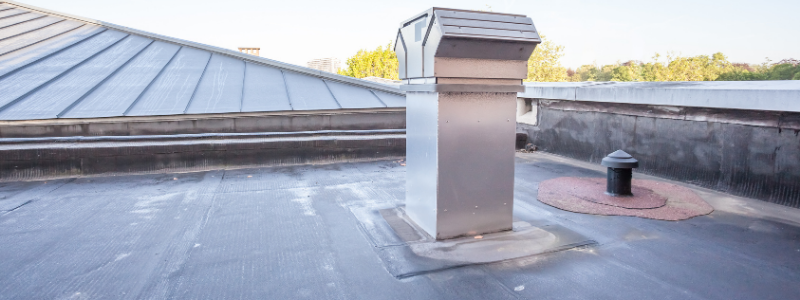
Thermoplastic Polyolefin (TPO)
Right away, the first thing that most people notice about TPO, or “Thermoplastic Polyolefin,” on a commercial roof is its color and brightness. Just about every TPO commercial roof is a bright shade of white that makes it, as a roofing material, immediately recognizable. In our gallery, you may see a few examples of this, like the IKEA store project in Centennial.
Every TPO commercial roof is a bright shade of white. But the brightness and color of a TPO commercial roof aren’t just for aesthetic purposes. Rather, the white color and brightness allow TPO roofs to be extremely reflective, making it easy for them to reflect the intense rays of the sun, ensuring that the interior of your commercial building is kept nice and cool. This cuts down on business energy bills.
TPO commercial roofs are single-ply and can be quite inexpensive. Many commercial roofs make use of them, due to their low-cost nature and reflectivity. But even though they are single-ply, they offer an exceptional amount of durability, protecting against:
- Intense UV rays
- Strong heat
- Fungus
Because of this, according to GAF, over one billion feet worth of TPO roofing is installed every single year.

Ethylene Propylene Diene Monomer (EPDM)
Ethylene Propylene Diene Monomer – “EPDM” or “EPDM Rubber” – is similar to TPO, in that it is a form of single-ply membrane commercial roofing. Because of this, they both possess a somewhat similar design, but the chemicals that they are made of, along with the installation process, differ quite a bit.
As a commercial roofing material, EPDM is exceptionally durable. This durability involves a few key factors, including extreme resistance to:
- Intense heat/drastic changes in temperature
- Ozone
- Strong UV rays
Many commercial buildings choose to use EPDM, because of these factors. But, at the same time, there are plenty of commercial buildings that choose to go with a different material since EPDM can be difficult to install, while also being rather costly.
Sprayed Polyurethane Foam
One of the strongest and most long-lasting commercial roofing materials is Sprayed Polyurethane Foam. Sprayed Polyurethane Foam – most people just call it “SPF” – is a material that, after being sprayed as a liquid, gradually turns into a dense layer of foam. The simplicity of this process makes SPF very desirable, as a commercial roofing material, since it allows for tremendous ease and convenience.
Every SPF commercial roof consists of several barriers, all of which are embedded within the SPF layer. These barriers block out:
- Intense UV rays
- Strong winds
- Moisture (of all sorts)
- High/extreme temperatures
As a result of this, the commercial buildings that rely on an SPF commercial roof tend to have better insulation than many others.
A properly-installed SPF commercial roof can easily last over fifty years. Even though SPF commercial roofs are often a little more expensive than other, less expensive, commercial roofs, the longevity and durability that they offer more than makes up for the higher price.
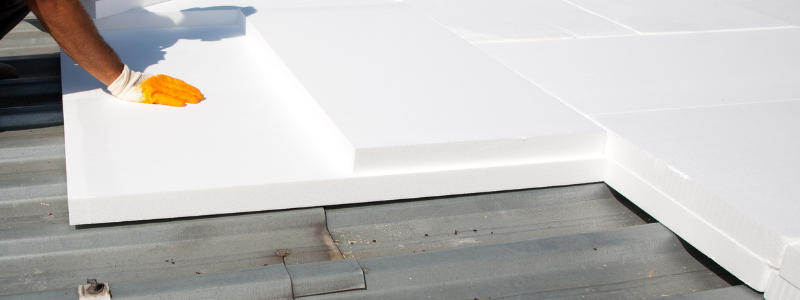
Restoration Coatings
A restoration coating is, essentially, coating the entire surface of a commercial roof with a thick layer of silicone. Doing this offers many benefits, but it should only be done if the commercial roof is structurally sound. If the commercial roof is leaking or getting too hot, for example, then that would be the perfect time for a restoration coating. But, if it’s slowly breaking down on the inside, then a restoration coating won’t do much good.
A thick layer of silicone, on just about any commercial roof, will perform three major functions.
- The most important function is that of creating a thick, durable membrane that blocks out water, while also resisting water that might form a puddle on the roof.
- Silicone is a reflective material, and as such, the second major function is reflecting the sun’s rays, ensuring that excess heat doesn’t enter the commercial building.
- The third – and final – major function is that of allowing your roof to last for a longer period of time, assuming there’s no structural damage so that it can continue to protect your commercial building from the elements.
Modified Bitumen
More and more commercial buildings are choosing to use modified bitumen roofing. The main reason for this is because modified bitumen roofing offers the same advantages as tar & gravel roofing while being made of asphalt and offering a few unique features that other built-up roofs simply don’t offer.
As a commercial roofing material, modified bitumen is:
- Waterproof
- Tear-resistant
- Expands and contracts without losing its shape
- Low maintenance
- Each one of these advantages differs slightly from other forms of built-up roofing and, because of these advantages, modified bitumen is quickly becoming the go-to for flat and low-slope commercial roofing systems.
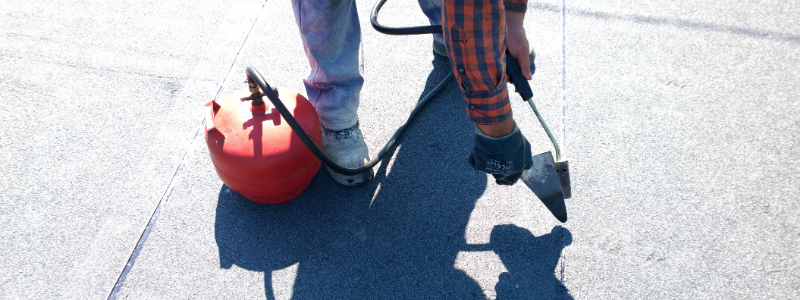
Metal Materials
One of the most common materials for commercial roofs of all sorts is, quite simply, metal materials. There are so many different metal materials available for any type of business, any type of weather.
Some of the most common metal materials for commercial roofs include:
- Aluminum
- Copper
- Tin
- Steel
Each one of those materials is exceptionally durable, while also being very affordable and resisting fires and other intense hazards.
Metal roofs for commercial buildings are increasing in popularity as the “industrial” look is an aesthetically pleasing one and businesses don’t need to focus on roof repair or replacement as much with metal commercial roofing materials.
For an estimate on any commercial roof or questions about commercial roofing materials, contact us. We’re happy to help. We’ll give you our professional expertise and opinion.
When To Get A Roof Inspection
The importance of your home’s roof cannot be overstated. A sturdy and strong roof is your home’s first defense against the elements. The key to a healthy roof is to know when to get a roof inspection.
To ensure that your roof is as sturdy and strong as it can be, having your roof inspected on a regular basis is our best advice. By having your roof inspected regularly, you will learn if your roof has any problems, and then you will be able to fix those problems, ensuring that your home remains protected from the elements.
What Is A Roof Inspection?
A roof inspection consists of two separate inspections – a thorough inspection of your exterior roof surface and a thorough inspection of your interior roof surface. By inspecting those two elements of your roof, a roof inspector is able to determine the current quality of your roof, while also pinpointing any problems that must be dealt with.
A roof inspection is, just as the name implies, an inspection of your roof. But a proper roof inspection is more than just a quick glance at your roof – a proper roof inspection consists of inspecting the exterior of your roof and the interior of your roof. By performing those two inspections, you are able to determine the current state of your roof, while also pinpointing any problems that must be dealt with.
Exterior Roof Inspection
An exterior roof inspection consists of inspecting the roof’s surface and basic structure. It also includes inspecting the perimeter of the property, including siding, gutters, air conditioning units, and more.
To perform an exterior roof inspection you must go onto the roof and examine things like:
- Shingles
- Flashing
- Gutters,
- Roof planes
That way, you can see if there are any broken shingles, cracks, leakages, damaged gutters, or ice dams.
Interior Roof Inspection
Right after the exterior roof inspection, you must perform an interior roof inspection.
To do this, you will need to go into your home’s attic and examine the insulation, ventilation system, and current state of the ceiling. Doing so allows you to make sure those facets of your roof are in tip-top shape, ensuring that things like mold growth or decayed roofing are present.
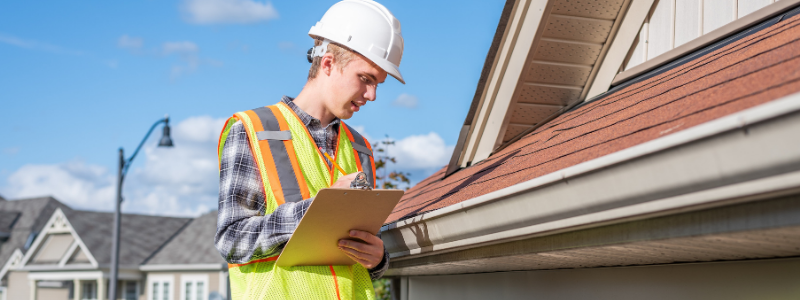
Why Are Roof Inspections Important?
A roof, for it to remain capable of protecting your home from the elements, must be in tip-top shape. It’s the first defense of your home, loved ones, and your belongings. For your roof to be in tip-top shape, it must not have any significant problems that can lead to the degradation of the roof and its inability to protect the interior of your home. To ensure that your roof does not have those problems and that if it does they are dealt with as soon as possible, regular roof inspections are of the utmost importance.
Colorado Weather Can Be Harsh
Everyone who lives in Colorado knows that Colorado is one of the most beautiful states in the country. Everyone who lives in Colorado also knows that Colorado is no stranger to bouts of exceptionally intense weather. All of the rain, wind, snow, and ice that Colorado experiences can have a significant effect on the quality and durability of your roof.
To ensure that Colorado’s elements do not affect your roof too much and that whatever problems they cause are dealt with as soon as possible, your roof must be inspected. A roof inspection will allow you to understand the current state of your roof, and whether or not there are any problems that must be dealt with. By knowing the current state of your roof, and knowing whether there are any problems to take care of, you are able to keep your roof in tip-top shape.
Many of the more significant roof problems reveal themselves slowly.
Prevent Other Roof Problems
During the Winter season, for example, it isn’t uncommon for ice dams to form on your roof. When an ice dam has formed, the water on your roof is unable to fall away, forcing it to leak into your home.
This may not be noticed, at first, but eventually, this water will build up and cause significant damage to:
- Roof
- Siding
- Ceilings
- Attic
- Walls
Since these problems reveal themselves slowly, it is important to have your roof inspected regularly, even if there doesn’t appear to be any problems. The problems that may be present will likely only get worse, and it’s considerably cheaper to remove an ice dam and replace some rotten shingles than it is to replace your entire roof, the ceilings in your attic, and various walls in your home.
When Should You Get A Roof Inspection?
According to The National Roofing Contractors Association, you should have your roof inspected during both fall and spring, as well as after any significant weather event. By having your roof inspected during those seasons, as well as after those events, you are able to notice any significant damages when they occur, allowing you to deal with them promptly.
The National Roofing Contractors Association recommends having your roof inspected at least twice a year; during fall and spring. Those two seasons, in particular, are the safest for both roof inspections and roof repairs. Inspecting your roof during the winter, especially in Colorado, may be dangerous.
Along with that, The National Roofing Contractors Association also recommends having your roof inspected after any significant weather event. A snowstorm, for example, can cause plenty of damage to your roof, so it’s a good idea to get your roof inspected right after the storm has passed.
A roof inspection for both Fall and Spring – two roof inspections annually – allows your roof to be inspected safely and thoroughly. Any damage that’s found on your roof can then be dealt with, during those seasons. Every time a significant weather event takes place, it’s a good idea to have your roof inspected. That way, you are able to check the state of your roof and take care of any problems that your roof may be an experience
Even though you can inspect your roof on your own, it’s almost always a good idea to hire a professional. A professional roof inspector knows how to traverse roofs of all sorts safely, and they also know how to inspect each and every facet of your roof. Because of this, when a professional roof inspector is finished inspecting your roof, they will know exactly what’s wrong – and what’s right, for that matter – with your roof. But, if you inspect your roof on your own, without any prior knowledge or experience, it’s likely that you may miss certain facets of your roof that need to be examined more closely and thoroughly.
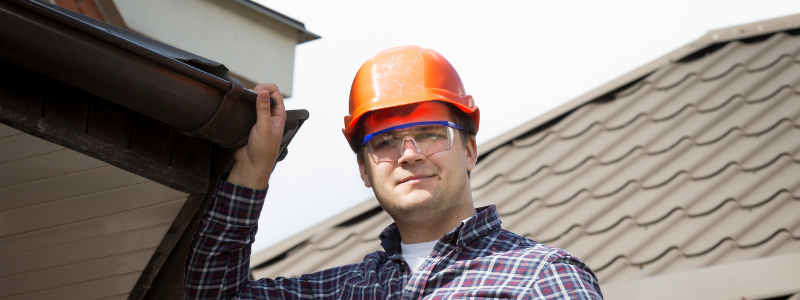
- The National Roofing Contractors Association recommends having your roof inspected one during Fall and once during Spring
- The National Roofing Contractors Association also recommends having your roof inspected after any significant weather event
- Fall and Spring are the safest and easiest seasons to have your roof inspected, especially in Colorado, due to the comparatively mild weather and safer weather conditions
- Hiring a professional roof inspector is almost always a good idea,
- A professional roof inspector knows how to traverse your roof in a safe manner
- A professional roof inspector will know how to examine every facet of your roof closely and thoroughly, ensuring that no problems or potential problems are missed
- B&M Roofing offers roof inspection services, you can get in touch with us today to get an inspector and a free estimate for any repairs or replacements that may be necessary
B&M Roofing offers roof inspection services. By getting in touch with us using this form, we will come to your home, inspect your roof, and then give you our estimate regarding any repairs or replacements that are necessary!
Winterizing Your Roof
Fall is here, which means plenty of leaves to clean up, sprinklers to shut off/blow out, and tons of other chores to do around the yard and home. This time of year is also a great time to repair or replace your roof. If you don’t need any repairs or a roof replacement, then winterizing your roof is the next fall task you should have completed before the weather really starts to turn against your favor.
With the first freeze of the year usually happening in fall, it’s a good time to start thinking about how to best prepare for the winter. Just as you would ‘winterize’ things like pipes, boats, tires, pools, and lawns, we recommend you include your roof on that list, as well. Taking some preventative and proactive measures now to protect your roof can save you a good chunk of change in the future.
It’s important to note that this checklist could probably also be used in the springtime, to prepare for the warmer months, as well. The benefit of doing that is that you’ll keep your home safe from the harsh, outside elements year-round. Weatherizing your roof will also keep your home insulated, thus lowering your energy costs.
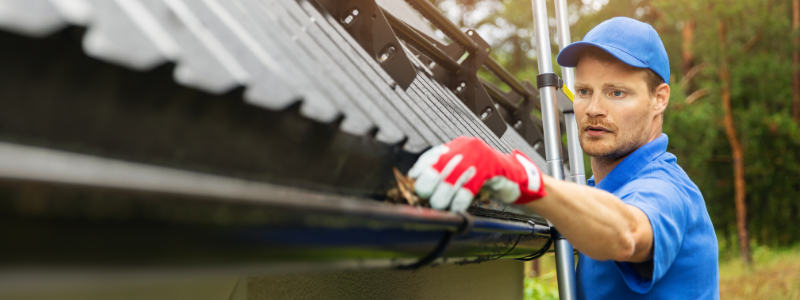
Winterizing Your Roof Checklist
While it’s best to have a professional roofer come inspect your home and do any necessary repairs, there are just some things you can do as a homeowner to prepare yourself and your home for the cold, harsh weather that approaches.
We’ve developed a checklist that you can follow to start winterizing your roof today:
☐Look for damage
Simply inspect your roof for warping, missing shingles, and debris. Look for damage to your gutters, flashing, and any vents or skylights. Finding any damage in these areas means you could have damage to your shingles, too. Catching problems early on can save you time and money in the future.
☐Clean and test your gutters and downspouts
Without the proper drainage system, your roof can collapse or suffer from extensive water damage. Make sure to inspect your gutters and downspouts thoroughly for holes and cracks and remove any debris. After you’re done removing debris, run some water through the gutters to ensure they’re draining properly.
☐Trim your tree branches
Falling tree limbs are a major threat to your roof during the winter. With heavy wind and snow, trees and limbs can easily break off and damage other things around them. If you have any trees around your home, inspect for branches that are hanging over or touching your roof. Trim these branches before winter sets in to save your roof from being damaged by falling limbs.
☐Insulate & ventilate your attic
Insulating and ventilating your attic is a key step to protecting your roof during the winter. As little as one to two inches of snow can create ice dams, which can damage the foundation of your roof. Install insulation on the plywood or drywall of your attic. Make sure to seal any areas where heat can escape. Proper ventilation will also help prevent snow from refreezing and causing moisture damage.
☐Inspect caulking & flashing
Check for wrinkled and cracked caulking and replace it if necessary. If the area is a safe place to do repairs, simply reapply the caulk (waterproof caulking, used for bathrooms is perfectly fine). Secure any loose flashing and replace any that are damaged. Pay close attention to areas around the chimney, vents, and other protruding additions to the roof.
☐Clean your chimney
Because your chimney will be getting some extra use during the colder months, it’s important to inspect and clean your chimney annually. Regular cleanings can prevent fires and protect your roof from damage. There may also be critters living in your chimney, which can spell disaster for your roof.
☐Invest in snow guards
Installing snow guards this winter will protect your gutters, vents, cars, and family from roof avalanches. Snow guards catch heavy snow before it falls from your roof. They allow it to melt before it falls to the ground. Investing in snow guards is inexpensive and will prevent damage to the areas on and below your roof.
☐Be aware of pests
Pests can cause a tremendous amount of damage to your roof. Keep an eye out for squirrels, birds, mice, and other animals who may seek shelter on your roof during the colder months. Hire a pest control to get rid of them as soon as possible. Different types of critters can manipulate the roof to accommodate their needs, but not yours. You may see signs of eaten shingles, bitten off to create space for their homes, or holes around flashing, etc.
☐Cover mechanical equipment
Any mechanical equipment on your roof like plumbing vents or swamp coolers should be covered to prevent water damage. Just like your grill or air conditioner needs to be covered, any mechanical equipment on your roof will need the same type of care. This will ensure that it performs at optimal efficiency and isn’t compromised by the harsh weather and elements.
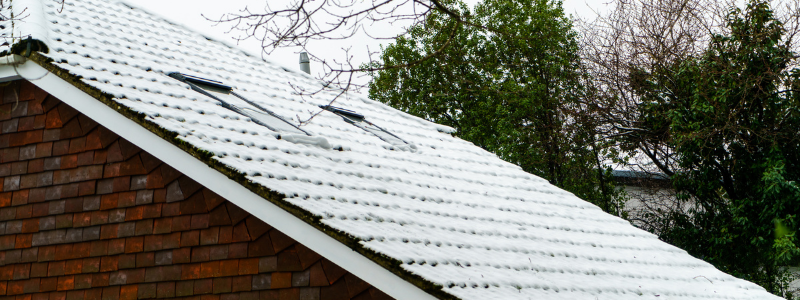
No, winterizing your roof may not be the most exciting part of the fall season, but it can save you time and money in the future. We promise it’s more fun than having to repair damages inside the home or replace your entire roof. It may seem like a large chore, but following this checklist will actually go pretty quickly, and save you more time and money in the future.
By following this checklist and taking simple, precautionary measures, you can protect your roof from the damages of wind, snow, and ice this winter.
If any problems arise from inspecting and winterizing your roof on your own, B&M Roofing experts are ready and happy to assist. Our roofing experts work hard in not simply dealing with roof problems, but helping find the cause of all damage-related issues and repairing them. Whether it’s a simple repair or total roof replacement, our proactive and detailed response to roof damage issues will restore your home as well as your faith in roofing contractors.
